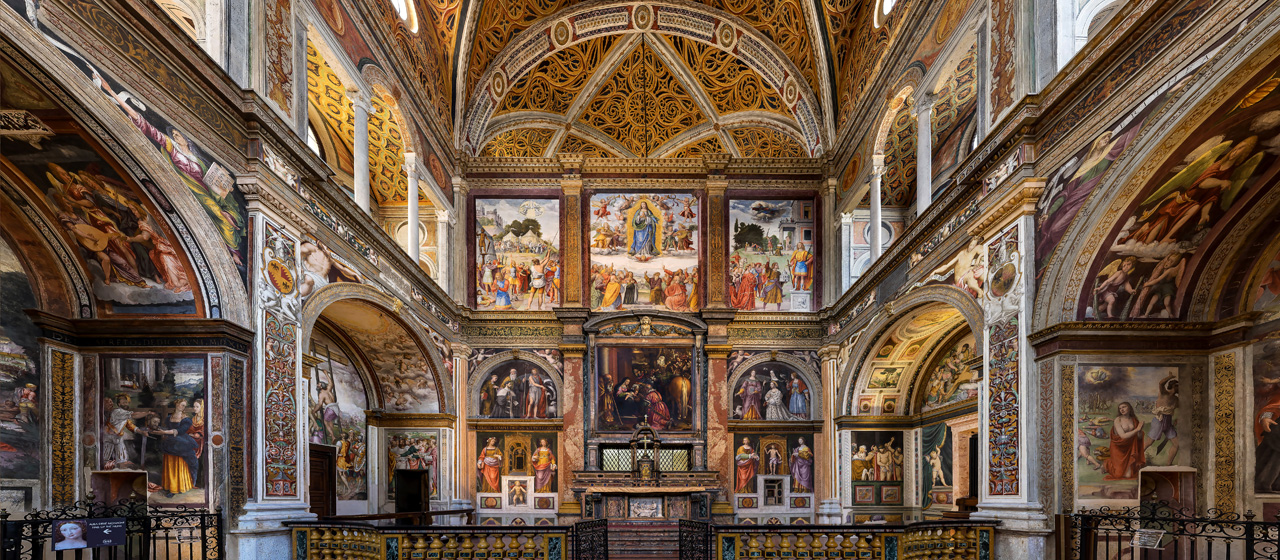Church of San Maurizio at the Maggiore Monastery
San Maurizio at the Maggiore Monastery is a church in Milan of early Christian origin, rebuilt in the 16th century and formerly the site of the most important female monastery in the city belonging to the Benedictine order.

Located on the corner between via Luini and corso Magenta, it is internally decorated with a vast cycle of frescoes from the Leonardo school and is also called the "Sistine Chapel" of Milan or Lombardy.

The monastery is already documented in the Carolingian era and partially reuses some Roman buildings; still part of the complex today are a polygonal tower, a remnant of the ancient walls of Maximian, and another square one, which was originally part of the Roman circus.

The construction of the existing church began in 1503, as is engraved on a stone found in the apse. All documents relating to its design having been lost, it is attributed by critics to the architect and sculptor Gian Giacomo Dolcebuono, assisted by the architect Giovanni Antonio Amadeo, at the time responsible for the construction of the cupola of the Milan cathedral, and also active at the Certosa di Pavia and at the church of Santa Maria near San Celso.

The building was completed in just a few years, so much so that in 1509 the first tombstones were already placed there.

The facade was completed last, in 1574, by Francesco Pirovano.
 ???????
???????
The imposing fresco decoration, which made the temple famous, praised by Ruskin and Stendhal, was begun in the second decade of the sixteenth century by authors from the school of Leonardo da Vinci, engaged in those years in Milan at the Virgin of the Rocks, such as perhaps Giovanni Antonio Boltraffio.
Map: Church of San Maurizio at the Maggiore Monastery
Address: Corso Magenta, 15, 20123
Milano (MI) Lombardia
Latitude: 45.46557866558083
Longitude: 9.178905487060547
Site: http://www.chiesadimilano.it/c...
vCard created by: Culturalword Abco
Currently owned by: Culturalword Abco
Type: Building
Function: Church
Creation date:
Last update: 05/12/2022